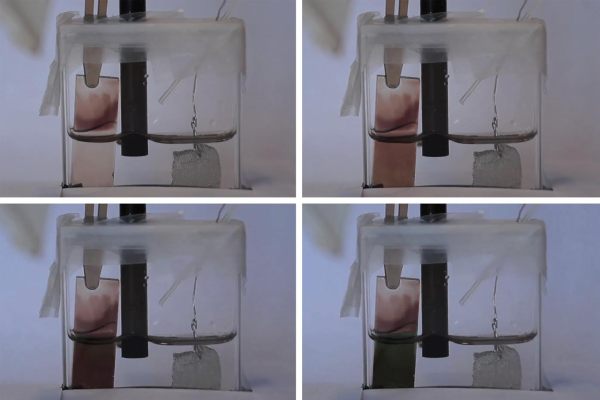They’re more than just a big set of transitional lenses for buildings. For one thing, the new glass technology pioneered by a team of scientists at MIT is capable of changing shades much faster that what you’ll find on those ultra-hip eyeglasses. It also covers a broader spectrum of opacity than such photochromic substances.
The material also differs from the electrochromic variety you’ll find on the windows of Boeing 787 Dreamliner to prevent glare. Again, it’s quicker, in part due to the slow speeds of electronics and ions required to create the material change in the older technology. Utilizing spongy metal-organic frameworks, the new stuff conducts both quickly.
The material is also capable of running the spectrum from completely clear to nearly black, the latter of which it accomplishes by combining different chemical compounds.
The material, highlighted in the new issue of the online journal Chem, could be used to reduce glare (a la Boeing), produce e-ink-style displays and cut down on energy costs by going opaque for cooling purposes when the sun is particularly glaring outside. And while, like other electrochromic solutions, the material requires a current to change shades, electricity isn’t required to keep it in that state.
